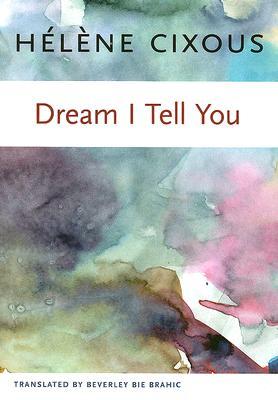For about three months a couple of years ago I slept with my computer in bed with me. On one pillow—my softest pillow—I’d lay my head, and on the pillow directly beside me I’d lay down my computer, which would hum softly and blink silently until eventually clicking off completely. When my boyfriend slept over, I’d reluctantly move the laptop to my desk on the other side of my bedpost. But if it were up to me it was within arms reach, ready for me should I wake up and want to record my dreams in what Hélène Cixous calls “my most brute and innocent state.”
A feminist writer, poet, playwright, literary critic and all around “grande dame of intellectual France” (Publishers Weekly), Hélène Cixous is an avid dream-recorder herself. She keeps a notebook in a drawer to the left of her bed—“my box of dreams”—and jots down her dreams immediately after waking. “The dream dictates I obey eyes closed,” she says of her hazy pre-dawn ritual. “The hand in the dark writes as best it can, hurtles along, going off track. Once it is done, the dream slips itself into the dream box and I get up. Dozens of dreams later…it comes time to read them.” In 2007 she published 50 of these dream fragments in a “book of dreams without interpretation.” The dreams are not edited or arranged in any sort of order. The book is slender with a watercolor-stained cover. It’s title is a command: DREAM I TELL YOU.
Even before DREAM I TELL YOU was published, dream-collecting had always been an important part of Cixous’ writing. As a student of Freud, she was interested in psychoanalysis and the interpretation of dreams, and she used them as material for much of her work. Without dreams, she writes, “I would crumble to dust.” In DREAM I TELL YOU she notably resists any analysis of her dreams and reproduces them exactly as they were first written down, when her mind was still lingering in that transitional period between asleep and awake. The result is a whimsical collection of nocturnal short stories that may begin mid-thought or resist the logic of daylight hours, but are just as lyrical, insightful and witty as her other writing. In one dream fragment, she plans for a meeting with German philosopher Martin Heidegger (“My idea was to invite him to the University for lunch with just a few others…a tête-à-tête in fact, where you could really chat.”), in another her lunch is disrupted by a lion cub (“It was a pretty golden beast, heavy, not very big, with a firm, resolute and fearless gait, I bent and stroked its head and body”). In many of them, her father, mother, daughter and friends make appearances. In some we watch everyday preoccupations inflate to the point of hysterics, most notably in her reoccurring dreams about losing her daughter (“The innocent Why my god how did I manage not to look after the darling child all day long? What could I have been thinking of?”). And then there’s the one where she’s fleeing from the nazis: “It was a tragic night in any case, in the heart as we were of nazi country. The world violent, cruel. In the tunnel black as a min shaft I saw nothing but the feet, or not even, of wretched, whipped humanity…”
Even in my most clear headed, heavily-caffeinated days I can’t write that with that degree of poignancy and precision, so it’s safe to say that my dream journaling didn’t produce anything nearly as pleasurable to read as Cixous’. Anyone who’s gotten stuck listening to a friend or coworker recount his or her meandering, illogical dream from the night before knows that dreams are never as interesting to other people as they are to the dreamer. But as with travel writing, epistolary books, and diaries, deeply personal insights into a writer’s inner life can prove fascinating, and if it’s a writer whose language you love it’s usually worth the read. It also doesn’t hurt, in Cixous’ case, that her dreams allude to aspects of an interesting life, from her childhood in French Algeria to her adult life as a well known writer and scholar with many famous writerly and scholarly friends. (The “you” in the title and the person to whom all of the dreams are addressed is no less than her lifelong friend Jacques Derrida, who later responded with his book GENESES, GENEAOLOGIES, GENRES AND GENIUS.) While I don’t think everyone’s dream journal should be published, I do think there is value in having one, especially for a writer. At the School of the Art Institute in Chicago, author Jesse Ball (SILENCE ONCE BEGUN, THE CURFEW) teaches a class on lucid dreaming to students in the creative writing program. In an interview with The Millions, Ball explains, “To me, most of the issues that a person has with technique will automatically be fixed by reading a lot of good books and by doing a lot of writing….The thing that I think that’s a better path to becoming good is to work on those other things—the content, to find things you love to write about, and then to become sharper and clearer at thinking. So my classes [on lucid dreaming] make people live better, more interesting lives and then whatever they write will be better.” Cixous clearly agrees, given the importance she puts on dreams and the massive dream archive she keeps. Her advice for writers? “We should write as we dream; we should even try and write, we should all do it for ourselves, it’s very healthy, because it’s the only place where we never lie.” Cixous is a gorgeous writer and a brilliant thinker, and her enchanting dreams are definitely worth reading.




